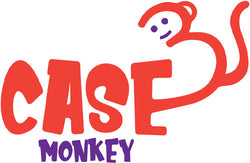
Different Ways to Restart Your MacBook
Different Ways to Restart Your MacBook
Restarting your MacBook is a simple task, but there are several methods to do so. Each method has its own advantages and is suitable for different situations. Whether you're troubleshooting, installing new software, or just want to give your system a fresh start, knowing how to properly restart your MacBook is an essential skill.
Using the Apple Menu
The most common way to restart your MacBook is through the Apple menu. This method is straightforward and easy to remember, making it ideal for everyday use.
To restart your MacBook using the Apple menu, click on the Apple logo located at the top left corner of your screen. A drop-down menu will appear. Select 'Restart...' from the list of options. A dialog box will appear asking if you're sure you want to restart your MacBook. Click 'Restart' to confirm.
Force Restart from the Apple Menu: In some cases, your MacBook may become unresponsive. If this happens, you can force a restart from the Apple menu. To do this, hold down the Shift key while selecting 'Restart...' from the Apple menu. This will bypass the confirmation dialog box and immediately restart your MacBook.
Remember, forcing a restart should only be used as a last resort. It can potentially cause data loss if you have unsaved work.

Using Keyboard Shortcuts
Keyboard shortcuts are a quick and efficient way to perform various tasks on your MacBook, including restarting it. They are especially useful if your trackpad is not working or if you prefer using the keyboard over the mouse.
To restart your MacBook using a keyboard shortcut, press the Control (Ctrl) and Command (⌘) keys simultaneously, then press the power button (or the 'Eject' key if your MacBook has one). This will bring up the same dialog box as the Apple menu method. Click 'Restart' to confirm.
Force Restart Using Keyboard Shortcuts: If your MacBook becomes unresponsive and you can't access the Apple menu, you can force a restart using a keyboard shortcut. To do this, press and hold the Control (Ctrl), Command (⌘), and power button (or 'Eject' key) simultaneously for a few seconds. Your MacBook will immediately restart.
Again, remember that forcing a restart can potentially cause data loss. Use this method only as a last resort.

Using the Terminal
The Terminal is a powerful tool that allows you to control your MacBook using command-line interface. You can also use it to restart your MacBook.
To restart your MacBook using the Terminal, first open the Terminal app. You can find it in the 'Utilities' folder within the 'Applications' folder. Once the Terminal is open, type 'sudo shutdown -r now' and press Enter. You'll be asked to enter your password. After entering your password, your MacBook will immediately restart.
Using the Terminal for Scheduled Restarts: You can also use the Terminal to schedule a restart at a specific time. This is useful if you want to restart your MacBook overnight or at a time when you're not using it.
To schedule a restart, open the Terminal and type 'sudo shutdown -r +time' where 'time' is the number of minutes until the restart. For example, 'sudo shutdown -r +60' will restart your MacBook in one hour. After entering the command, you'll be asked to enter your password. Once you've entered your password, your MacBook will restart at the specified time.

Conclusion
Restarting your MacBook is a simple task that can be done in several ways. Whether you prefer using the Apple menu, keyboard shortcuts, or the Terminal, each method has its own advantages and is suitable for different situations. Remember to always save your work before restarting to avoid any potential data loss.
By understanding these different methods, you can ensure that you're always able to restart your MacBook, no matter the situation. So the next time your MacBook needs a fresh start, you'll know exactly what to do.
Now that you know how to keep your MacBook running smoothly with a quick restart, why not ensure your other Apple devices are just as protected? Case Monkey offers a variety of stylish and durable phone cases specifically designed for your Apple iPhone. Check out our products and find the perfect case to shield your phone from everyday bumps and scratches. Keep your devices safe and secure with Case Monkey!
